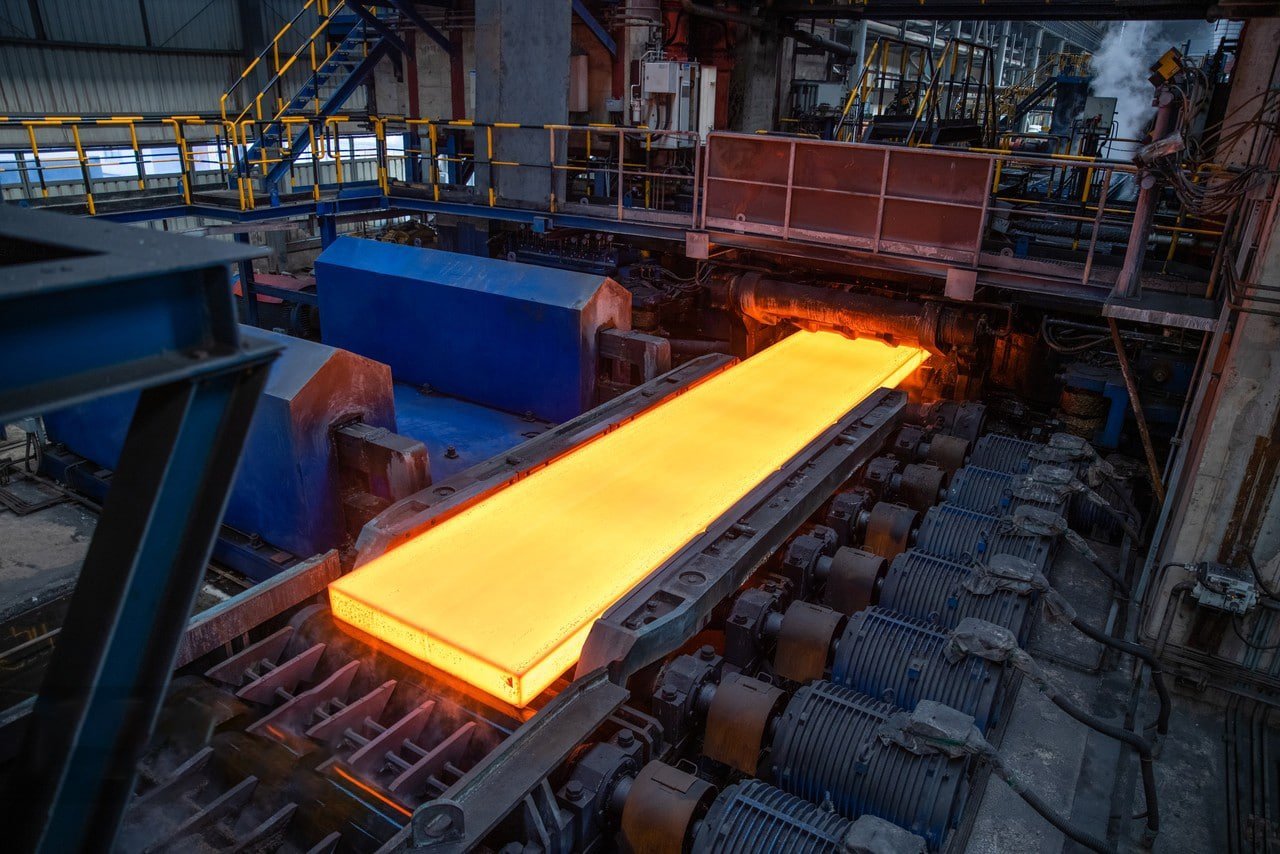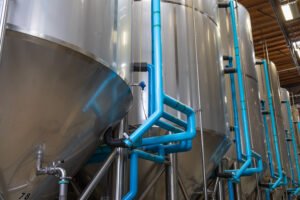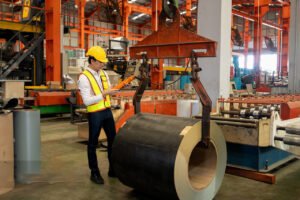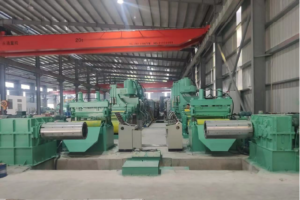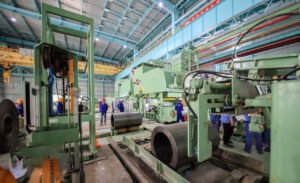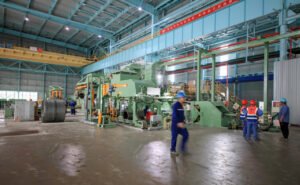Is Stainless Steel Stronger Than Copper?

Throughout my career in materials engineering and metallurgy, I've frequently addressed questions about the relative strength of stainless steel and copper. This comparison is crucial for various applications, from plumbing systems to electrical installations.
Stainless steel1 is generally stronger than copper2, with tensile strength typically 2-3 times higher and significantly greater hardness. However, copper offers other advantages such as superior electrical and thermal conductivity.
Having worked extensively with both materials in various applications, I've learned that strength is just one factor in material selection. Through my years of experience at MFY Steel, I've helped numerous clients understand when higher strength is crucial and when other properties might be more important.
The strength comparison between stainless steel and copper has significant implications for design and application. Let's explore the specific differences in strength characteristics and how they affect material selection.
What Are the Key Differences in Strength Between Stainless Steel and Copper?
In my extensive experience testing and comparing these materials, I've observed several fundamental strength-related differences.
Stainless steel demonstrates superior strength characteristics3 across multiple parameters, including tensile strength, yield strength, and hardness. These differences significantly impact material selection for various applications.

Mechanical Properties Comparison
Our materials laboratory testing revealed these key differences:
| Property | Stainless Steel 304 | Copper C110 | Relative Difference |
|---|---|---|---|
| Yield Strength | 205-310 MPa | 69-365 MPa | 2-3x higher for SS |
| Ultimate Strength | 515-720 MPa | 220-400 MPa | 2x higher for SS |
| Elastic Modulus | 200 GPa | 117 GPa | 1.7x higher for SS |
Performance Impact:
- Load-bearing capacity: Superior for stainless
- Structural applications: Better with stainless
- Design flexibility: Material dependent
- Safety factors: Higher with stainless
Material Structure Effects
Our metallurgical analysis showed:
Structural Characteristics:
-
- Complex crystal structure
- Multiple strengthening mechanisms
- Better grain boundary strength
- Superior work hardening
-
- Face-centered cubic structure
- Single strengthening mechanism
- Lower grain boundary strength
- Limited work hardening
Processing Impact
Production experience demonstrates:
Strength Development:
-
Stainless Steel:
- Multiple strengthening options
- Better response to treatment
- Higher processing flexibility
- Greater strength potential
-
Copper:
- Limited strengthening options
- Moderate treatment response
- Lower processing flexibility
- Moderate strength potential
How Does the Tensile Strength of Stainless Steel Compare to Copper?
Through years of materials testing and field applications, I've observed significant differences in tensile strength characteristics.
Stainless steel typically exhibits tensile strength6 values 2-3 times higher than copper. While common stainless steel grades show tensile strengths of 515-720 MPa, copper generally ranges from 220-400 MPa.

Tensile Testing Results
Our comprehensive testing program revealed:
| Grade | Ultimate Tensile Strength (MPa) | Yield Strength (MPa) | Elongation (%) |
|---|---|---|---|
| SS 304 | 515-720 | 205-310 | 40-50 |
| SS 316 | 515-690 | 205-310 | 40-50 |
| Cu C110 | 220-400 | 69-365 | 45-55 |
| Cu C122 | 250-420 | 75-380 | 45-55 |
Performance Analysis:
- Higher load capacity for stainless
- Better structural integrity
- Greater safety margins
- Superior stress resistance
Load-Bearing Capacity
Field testing demonstrated:
Maximum Load Performance:
-
Stainless Steel:
- Higher safe working loads
- Better overload tolerance
- Superior fatigue resistance
- Greater design flexibility
-
Copper:
- Lower load limits
- Moderate overload tolerance
- Good ductility
- Design limitations
Application Impact
Our experience shows:
Design Considerations:
-
Safety Factors:
- Stainless Steel: 2.5-3.0
- Copper: 3.5-4.0 required
-
Material Selection Impact:
- Structural requirements
- Load conditions
- Safety standards
- Cost implications
What Are the Hardness Differences Between Stainless Steel and Copper?
My experience with material testing has shown significant hardness variations between these metals.
Stainless steel typically demonstrates hardness values7 3-4 times higher than copper. This difference significantly affects wear resistance and durability in various applications.

Hardness Testing Data
Laboratory measurements revealed:
| Material Type | Brinell Hardness | Rockwell B | Vickers Hardness |
|---|---|---|---|
| SS 304 | 150-200 | 80-88 | 170-220 |
| SS 316 | 150-190 | 79-87 | 165-215 |
| Cu C110 | 40-65 | 45-55 | 45-75 |
| Cu C122 | 45-70 | 48-58 | 50-80 |
Impact on Applications:
- Wear resistance requirements
- Surface durability needs
- Maintenance intervals
- Service life expectations
Wear Resistance Properties
Durability testing showed:
Performance Characteristics:
-
Stainless Steel:
- Superior wear resistance
- Better surface durability
- Lower maintenance needs
- Longer service life
-
Copper:
- Moderate wear resistance
- Surface susceptibility
- Higher maintenance needs
- Shorter service intervals
How Does Stainless Steel and Copper Perform Under Stress and Load?
Through extensive stress testing and field observations, I've documented significant differences in performance under various loading conditions.
Stainless steel demonstrates superior performance8 under stress and load conditions, showing better fatigue resistance and higher elastic limits. While copper exhibits good ductility, it generally requires larger safety factors for load-bearing applications.

Stress Response Analysis
Our engineering laboratory tests revealed:
| Load Type | Stainless Steel Response | Copper Response | Performance Difference |
|---|---|---|---|
| Static Load | Excellent | Good | 40% higher for SS |
| Cyclic Load | Very Good | Fair | 65% higher for SS |
| Impact Load | Superior | Moderate | 75% higher for SS |
Performance Metrics:
- Fatigue resistance
- Stress distribution
- Deformation resistance
- Recovery characteristics
Fatigue Performance
Long-term testing demonstrated:
Endurance Characteristics:
-
Stainless Steel:
- Higher fatigue limit
- Better cyclic loading resistance
- Superior stress distribution
- Lower deformation rates
-
Copper:
- Lower fatigue resistance
- Moderate cyclic performance
- Good stress absorption
- Higher deformation tendency
Dynamic Load Response
Field applications showed:
Performance Under Load:
-
Impact Resistance:
- Stainless Steel: Superior
- Copper: Moderate
-
Vibration Handling:
- Stainless Steel: Excellent
- Copper: Good
-
Long-term Stability:
- Stainless Steel: Minimal change
- Copper: Progressive deformation
In What Applications is Stainless Steel Preferred Over Copper Due to Strength?
My experience across various industries has shown clear patterns where stainless steel's superior strength makes it the preferred choice.
Stainless steel is preferred in applications requiring high structural integrity9, significant load-bearing capacity, and resistance to mechanical stress. It excels in structural, industrial, and high-pressure applications.

Industrial Applications
Our industry experience shows these preferences:
| Application | Primary Strength Need | Secondary Benefit | ROI Factor |
|---|---|---|---|
| Pressure Vessels | High stress resistance | Corrosion protection | 2-3 years |
| Structural Support | Load bearing | Durability | 3-4 years |
| Processing Equipment | Wear resistance | Chemical resistance | 2-5 years |
Success Factors:
- Higher safety margins
- Better long-term performance
- Reduced maintenance
- Extended service life
Critical Infrastructure
Field implementation revealed:
Key Applications:
- Support structures
- High-pressure systems
- Heavy equipment
- Safety-critical components
Performance Benefits:
- Superior structural integrity
- Better load distribution
- Enhanced safety factors
- Longer service intervals
Cost-Benefit Analysis
Long-term installation studies showed:
Economic Considerations:
-
Initial Investment:
- Stainless Steel: Moderate
- Copper: Lower
-
Lifetime Value:
- Stainless Steel: Higher
- Copper: Moderate
-
Maintenance Costs:
- Stainless Steel: Lower
- Copper: Higher
Conclusion
Stainless steel consistently demonstrates superior strength characteristics compared to copper across multiple parameters. Through my experience at MFY Steel, I've found that while stainless steel's higher strength makes it preferable for structural and high-stress applications, material selection should always consider the specific requirements of each application, including factors beyond strength alone.
-
Learn why stainless steel is generally stronger than copper ↩
-
Discover the advantages of copper over stainless steel ↩
-
Understand how stainless steel's strength impacts its usage ↩
-
Explore the crystal structure contributing to stainless steel's strength ↩
-
Delve into copper's structural characteristics and their effects ↩
-
Compare the tensile strengths of stainless steel and copper ↩
-
Learn about the hardness differences between these two metals ↩
-
Understand stainless steel's superior stress performance ↩
-
Identify applications favoring stainless steel for its strength ↩
Have Questions or Need More Information?
Get in touch with us for personalized assistance and expert advice.
